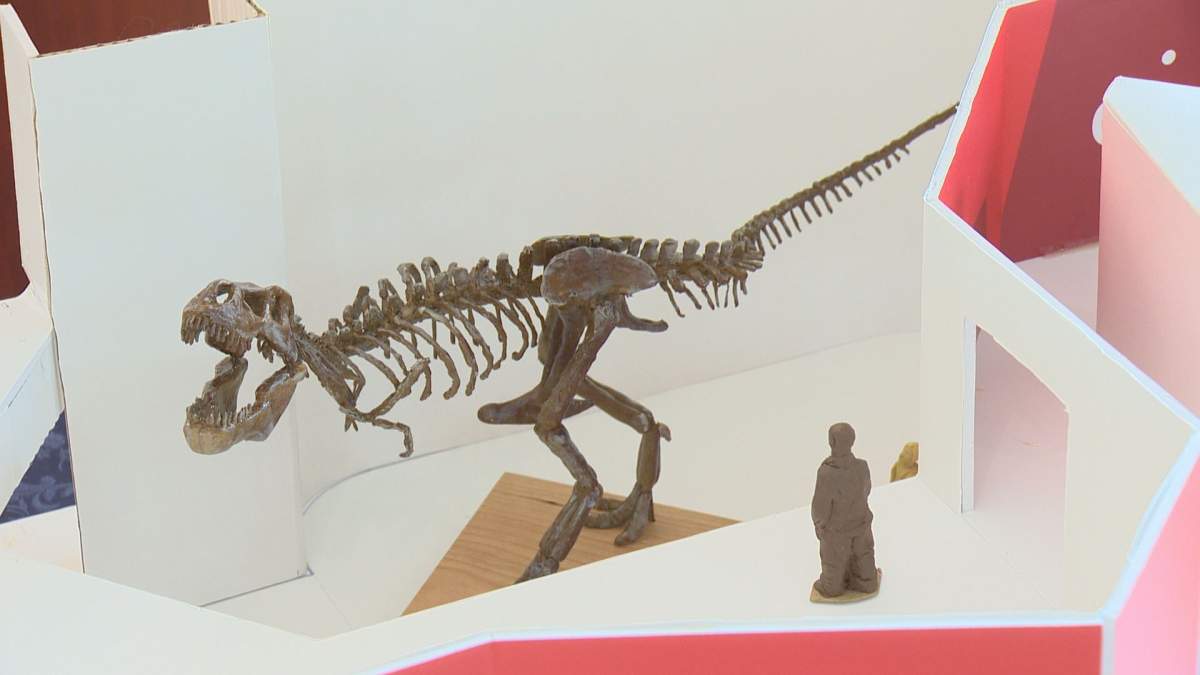The Royal Saskatchewan Museum (RSM) will be getting a major facelift over the next several months, and part of that facelift, will be literal. A full skeletal model of Scotty the T-rex will be added to the museum. Currently, the tyrannosaur’s skull sits on a podium in the main entrance.

“Scotty is arguably one of the largest tyrannosaurus rexes in the world, and he doesn’t have a home in Regina right now, so this is such an exciting moment,” Friends of the RSM executive director Michelle Hunter said.
This is all part of revitalization work that started last year. The work is expected to be complete in spring of 2019, and then Scotty will be installed in the main exhibit hall at the end of the process.
The Friends of the RSM and museum itself are putting $1.2 million towards the work. The federal government is chipping in $472,000 for functional improvements to the museum.
“It creates a brand new community space that will be used by everybody that visits the museum,” Hunter said.
These new spaces can be turned into classroom settings for grade school and post-secondary levels. Sections can also be rented for private events like weddings.
Regina-Wascana MP Ralph Goodale said he first visited the museum when he was in Grade 4, and this investment will help keep the museum fresh for the next generation.

Get breaking National news
“You continue to tell the fundamental stories, but you do so in constantly fresh and different iterations. That’s what the creative staff and scientific staff are working hard to accomplish,” Goodale said.
Scotty’s scientific significance
The T. rex skeleton was discovered by Eastend High School teach Robert Gebhardt in 1991, during an expedition near Eastend, Sask. with RSM paleontologists. The excavation process began in 1994.
Former RSM museum director Harold Bryant was a member of the team that dug up Scotty.
“The bones in many areas were very fragile, and yet the rock in which it was encased was like concrete. So imagine trying to chip away concrete and not destroy a very fragile skeleton that’s encased within it,” Bryant said.
The dig was a very labour intensive number of years. That hard work paid off in a full T. rex skeleton.
While the tyrannosaurus is one of the most well-known dinosaurs, Bryant said specimens like Scotty are rare.
“Each one’s going to tell you more about the species, more about the environment, what Saskatchewan was like 65 million years ago,” Bryant said.
“Scotty is a very massively built animal, shows a lot of evidence of battles, probably with other T. rexes what-have-you. So anytime you have a new skeleton, you have a whole lot of new information that you can add to the database.”
The RSM cast of Scotty’s skeleton will be the second one created. The first is located at the T. rex Discovery Centre in Eastend.










Comments